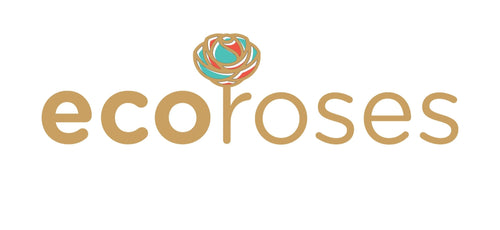Flower imports bring beauty from across the globe straight to our vases, weddings, and celebrations. But behind the delicate petals and vibrant colors lies a complex supply chain that has significant consequences for our planet. From carbon emissions and pesticide use to water scarcity and waste, the environmental impact of the global floral trade is far more than a romantic gesture might suggest.
In this article, we’ll explore:
-
How the international flower industry works
-
The hidden ecological costs of imported blooms
-
Sustainable alternatives that keep your arrangements beautiful and eco-friendly
1. How the Global Flower Trade Operates
Most cut flowers sold in the U.S., Europe, and parts of Asia are not grown locally. Instead, they come from “floral powerhouses” such as:
-
Colombia – Roses, carnations, chrysanthemums
-
Ecuador – Long-stem roses with vibrant colors
-
Kenya & Ethiopia – Roses, lilies, summer flowers
-
The Netherlands – Tulips, gerberas, and high-end exports
These flowers travel thousands of miles before reaching your bouquet:
-
Harvest – Flowers are cut, sorted, and graded for quality.
-
Cold Chain – Shipped in refrigerated trucks and planes to preserve freshness.
-
Distribution – Sent to wholesalers, florists, and supermarkets.
The speed and efficiency of this system keep blooms fresh - but at an environmental cost.
2. Carbon Footprint of Flower Imports
The biggest environmental challenge with flower imports is transportation.
-
Air Freight Emissions – Flowers are flown via cargo planes, generating high CO₂ emissions per stem.
-
Cold Storage Energy Use – Refrigeration consumes significant electricity, often powered by fossil fuels.
-
Last-Mile Delivery – Additional emissions come from trucks distributing flowers to retailers.
A 2018 study estimated that one bouquet of imported roses can generate up to 30 kg of CO₂ - equivalent to driving a small car for over 50 miles.
3. Water Consumption in Flower Farming
Many flower-exporting regions face water scarcity, yet flowers require intensive irrigation:
-
Roses in Kenya are grown near Lake Naivasha, which has seen water levels drop due to irrigation demands.
-
Ecuadorian farms in high altitudes rely on diverted streams, impacting local ecosystems.
To make matters worse, water is often diverted away from communities that need it for agriculture or drinking.
4. Pesticides and Chemical Use
Imported flowers are not subject to the same pesticide regulations as edible crops.
-
High Pesticide Residue – Many exported blooms contain traces of chemicals banned in importing countries.
-
Worker Health Risks – Flower farm workers, often women, face exposure to toxic substances without proper protection.
-
Ecosystem Damage – Pesticides can run off into rivers, harming aquatic life.
5. Waste in the Floral Supply Chain
Imported flowers often have short shelf lives, leading to significant waste:
-
At Wholesalers – Flowers past peak freshness are discarded.
-
At Retail – Supermarkets and florists throw away unsold blooms.
-
Post-Event Waste – Weddings and events often discard flowers after just a few hours of use.
Globally, this waste translates into millions of tons of organic waste annually, often ending up in landfills where it produces methane, a potent greenhouse gas.
6. Social Impacts of Flower Imports
Beyond environmental effects, the global floral trade affects communities:
-
Low Wages – Workers in developing countries often earn less than a living wage.
-
Seasonal Employment – Jobs can be unstable and dependent on export market demand.
-
Land Use Conflicts – Expanding flower farms can displace local food crops.
7. The Rise of Sustainable Floral Practices
To combat these challenges, consumers and florists are embracing eco-friendly alternatives:
7.1. Local & Seasonal Flowers
Buying flowers grown in your own region:
-
Reduces carbon emissions from transport.
-
Supports local farmers.
-
Encourages seasonal variety in arrangements.
7.2. Slow Flowers Movement
A global initiative promoting:
-
Locally grown blooms
-
Chemical-free farming
-
Transparency in sourcing
7.3. Certified Sustainable Farms
Look for certifications like:
-
Fairtrade – Ensures ethical labor practices.
-
Rainforest Alliance – Promotes environmental stewardship.
-
Veriflora – Focuses on sustainable flower farming.
8. Eco-Friendly Flower Care Tips
If you do purchase imported flowers, you can reduce their environmental footprint by:
-
Extending Vase Life – Change water daily, trim stems, and remove wilted petals.
-
Composting Spent Flowers – Divert waste from landfills.
-
Supporting Florists Who Source Sustainably – Ask where they get their blooms.
9. Future of the Global Flower Industry
Technology and consumer awareness are reshaping the floral industry:
-
Greenhouse Innovations – Energy-efficient greenhouses with solar power.
-
Sea Freight over Air Freight – Slower but more sustainable transport for certain varieties.
-
Consumer Education – More buyers are choosing eco-friendly bouquets.
10. Making Informed Choices
The truth is, we may never completely eliminate the environmental impact of flowers - but we can minimize it by:
-
Choosing local blooms when possible.
-
Supporting certified sustainable farms.
-
Reducing floral waste through reuse and composting.
When you purchase from ethical and eco-conscious sellers, you’re sending a message to the industry that beauty should not come at the planet’s expense.
🌿 Final Thoughts
Flowers will always be a part of human celebrations, rituals, and everyday joy. The challenge lies in ensuring that their beauty doesn’t come at a hidden cost to the environment or the communities that grow them. By making conscious choices - from sourcing to disposal - we can keep our floral traditions alive while protecting the planet for generations to come.
For those looking to combine elegance with ethics, explore flower imports from sources that prioritize sustainability, fair trade, and environmental care.


